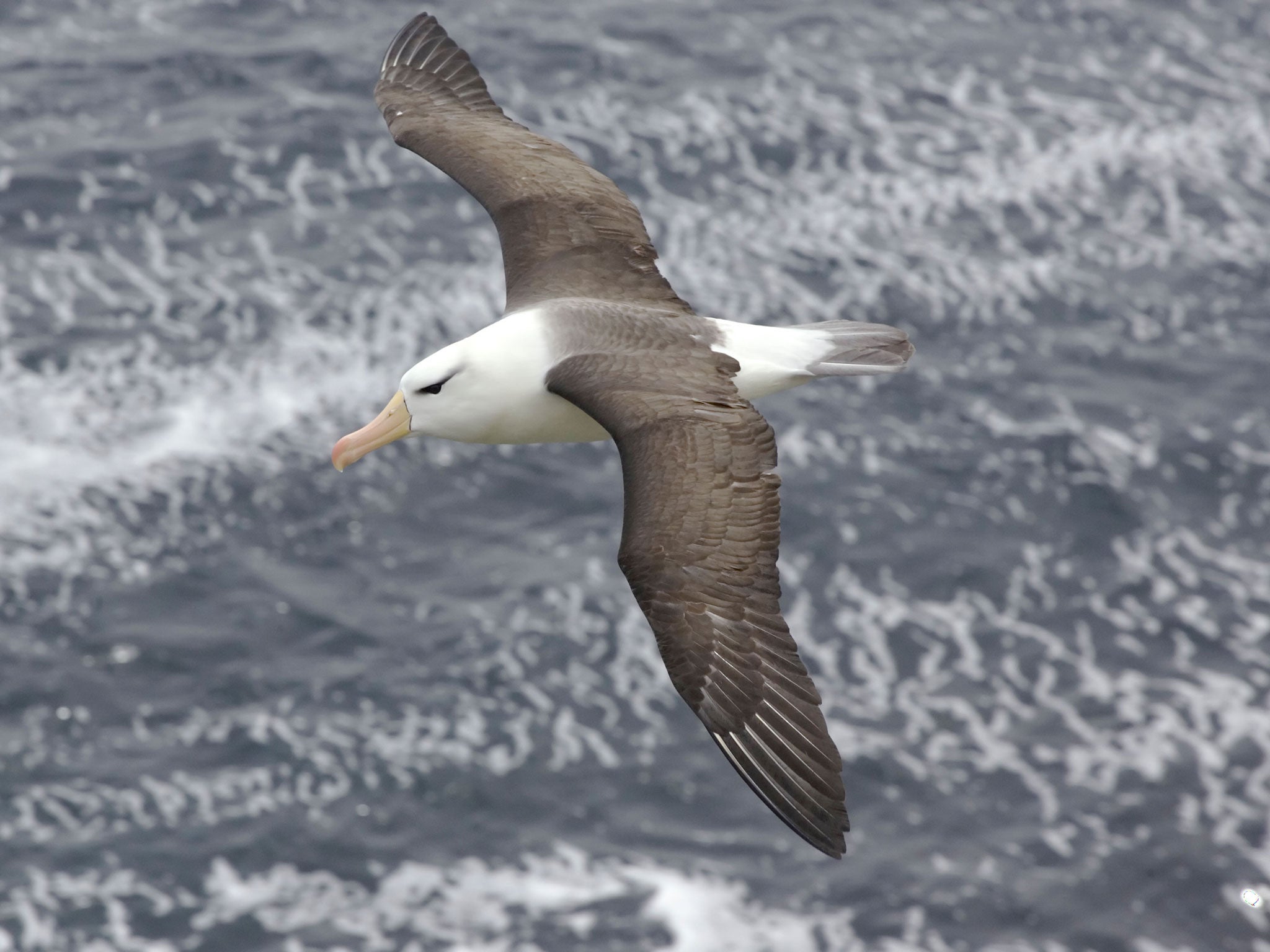How the unflappable albatross can travel 10,000 miles in a single journey

Scientists believe they have finally worked out how the mighty albatross – a seabird capable of travelling 10,000 miles in a single journey and circumnavigating the globe in 46 days – manages to fly without expending almost any energy.
People have long wondered how this master of the skies manages to stay aloft for long periods without flapping its enormous wings, which can reach up to 3.5 metres across.
Various theories were developed but researchers now believe they have cracked the problem after attaching highly sensitive GPS trackers to a group of 16 wandering albatross, one of the largest species, in the Indian Ocean.
This enabled the scientists to measure each bird’s position 10 times a second and to within a few centimetres, providing a detailed record of their flight path.
They found that albatrosses perform a “highly dynamic manoeuvre” that involves gaining height by angling their wings while flying into the wind, then turning and swooping along for up to 100 metres. They were recorded as flying at speeds as high as 67mph.
By repeatedly using this method, they can travel thousands of miles depending on the wind conditions. But they are not simply being blown along — they can actually fly much faster than the windspeed, about three times as fast in one example.
Aerospace engineer Gottfried Sachs, co-author of a paper about the research in this month’s Journal of Experimental Biology, said this “dynamic soaring” technique has been observed before, but never fully understood. Some experts thought the birds might use updraft from waves in order to stay airborne.
“This type of flying manoeuvre is so fascinating to look at. The birds have a beautiful form when they stretch out their wings.
“There is a great elegance in their appearance as well as in their kind of flying,” said Professor Sachs, who works at the Munich Technical University in Germany.
“People have observed the birds and were very impressed because it is such a fascinating manoeuvre. They were of course thinking, how did the bird manage this type of flying without flapping its wings. There were various theories… we think this question is now clarified.”
Nasa has looked at dynamic soaring as way to power unmanned aircraft that could carry out atmospheric and oceanic research or monitor fisheries for months at a time.
Grahame Madge of the RSPB said the new study was “yet further confirmation that albatrosses are supremely adapted for the environment in which they inhabit”.
However, he said that while the albatross had existed for about 50 million years, all 22 species are now in trouble. Eight are critically endangered, nine are classed as vulnerable and the remaining five are likely to become endangered, according to the International Union for the Conservation of Nature.
The problem is that the birds are inadvertently caught by fishing vessels using baited longlines.
It is estimated that this kills more than 100,000 albatrosses a year – about one every five minutes.
“It’s only really in the past century or so that their numbers have begun to decline rapidly. The rate at which they are being caught in fisheries… means that they are losing quite a lot of their population each year,” Mr Madge said.
Factfile: The albatross
Albatrosses can live to 60 years and beyond.
They mate for life and some do not find another if their partner dies.
They have the longest wingspan of any bird, reaching up to 3.5m (11.5ft).
In 2005, it was found that a grey-headed albatross had flown 13,670 miles around the world in the Southern Hemisphere in 46 days.
Large albatross species can spend up to five years at sea.
Albatrosses were once hunted for their feathers, which were used to make hats.
In Samuel Taylor Coleridge’s poem, The Rime of the Ancient Mariner, the killing of a “harmless albatross” dooms the ship’s crew.
Join our commenting forum
Join thought-provoking conversations, follow other Independent readers and see their replies
Comments